Cultural Relics: Glimpses Across Millennia
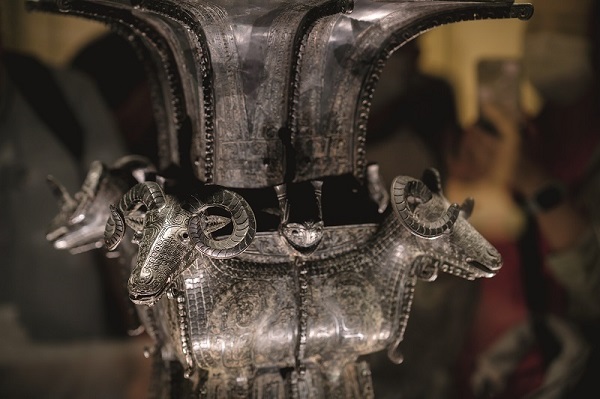
Cultural relics embody the splendor of civilizations, preserve the heritage of historical culture, and sustain the essence of each nation. The genetic code of Chinese civilization is embedded in each precious artifact of the nation.
The National Museum of China (NMC) boasts a remarkable collection of over 1.43 million artifacts, exhibiting a rich diversity and unparalleled excellence. They include some 815,000 ancient relics, 340,000 modern and contemporary artifacts, and over 240,000 volumes of ancient books and manuscripts. These treasures serve as a testament to the unending flow and continuous evolution of Chinese civilization and showcase magnificent inclusiveness. Notably, the collection features more than 6,000 first-grade cultural relics, representing a tangible embodiment of China’s esteemed traditional, revolutionary, and socialist cultures.
The exquisite collection of cultural relics on display tracks the enduring heritage of China over five millennia, the tireless struggles of the Chinese people over the past 180 years, the challenging explorations in more than 70 years since the founding of the People’s Republic of China in 1949, particularly the reform and opening-up efforts over the past four decades, and the fortitude and hard work in the new era. This captivating assortment profoundly captures the balanced relations between the past and the present, between the tributaries and the mainstream, and between history and culture. Within these artifacts, one can discern the perseverance and courage of the Chinese nation. These artifacts also serve as a reminder of the original aspiration and mission of the Communist Party of China (CPC), which remains dedicated to the well-being of the people and the rejuvenation of the nation.
As visitors meander in the museum, they will be bathed in the profound cultural heritage and relentless pursuits that define the Chinese nation. The perpetual vitality and immense depth of Chinese civilization can be felt there, resonating with the indomitable spirit of its people. Through the treasures showcased in the NMC, one can gain an understanding of China.
Preserving and Showcasing China’s Traditional Culture
The splendid tapestry of Chinese civilization, rising from multiple origins, illuminates the vast land of China. The evolution of means of production has brought about changes of the times, and intricately crafted ceremonial artifacts bear witness to the zeniths of many dynasties. A diverse array of cultural relics from various ethnic groups, displaying a harmonious blend of vibrant uniqueness and converging styles, serves as a testament to the collective journey of the Chinese nation. Historical cross-cultural exchange between the East and the West gave rise to magnificent artistic milestones. Within the NMC, the flames of China’s esteemed traditional culture burn brightly, with its legacy carried forward from one generation to another.
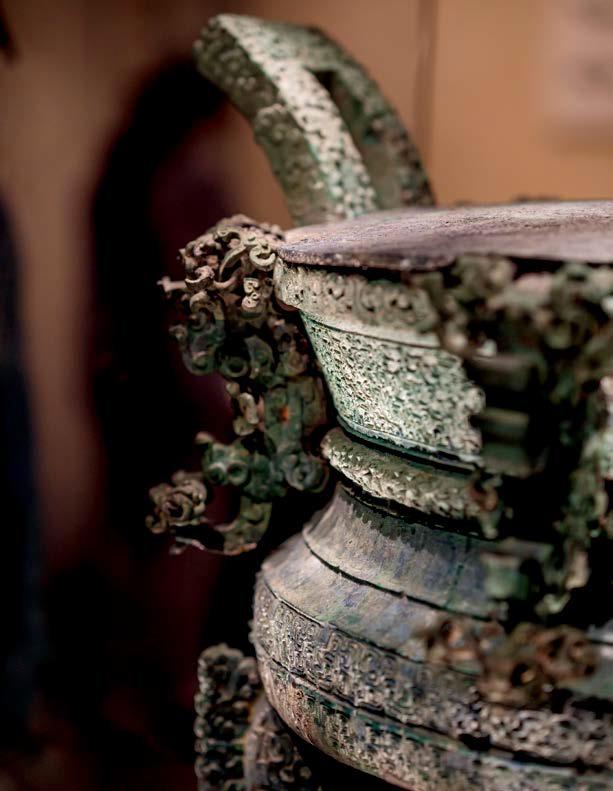
A bronze vessel displayed in the permanent exhibition “Ancient China” at the NMC. (Photo by Guo Shasha/China Pictorial)
An Ancient and Illustrious Civilization Spanning the Ages
The NMC houses the meticulously carved “First Dragon of China” from the Hongshan Culture, China’s best-known Neolithic culture which dates back 5,000 to 6,500 years, the majestic Houmuwu Ding (cooking vessel) of the late Shang Dynasty (1600-1046 B.C.), the “Li” Bronze Gui (ritual vessel) that records King Wu of Zhou’s conquest over the Shang Dynasty, the vivid Pottery Storyteller Beating a Drum of the Eastern Han Dynasty (25-220), a vibrant tricolored glazed pottery camel with musicians of the Tang Dynasty (618-907), and captivating porcelains, calligraphy, and rare ancient books from the Song (960-1279), Yuan (1271-1368), Ming (1368-1644), and Qing (1644-1911) dynasties. The plethora of archaeological artifacts and literary documents unearthed or preserved, like shimmering pearls, string together the narrative of Chinese civilization’s development, radiating the brilliance and profundity of Chinese culture.
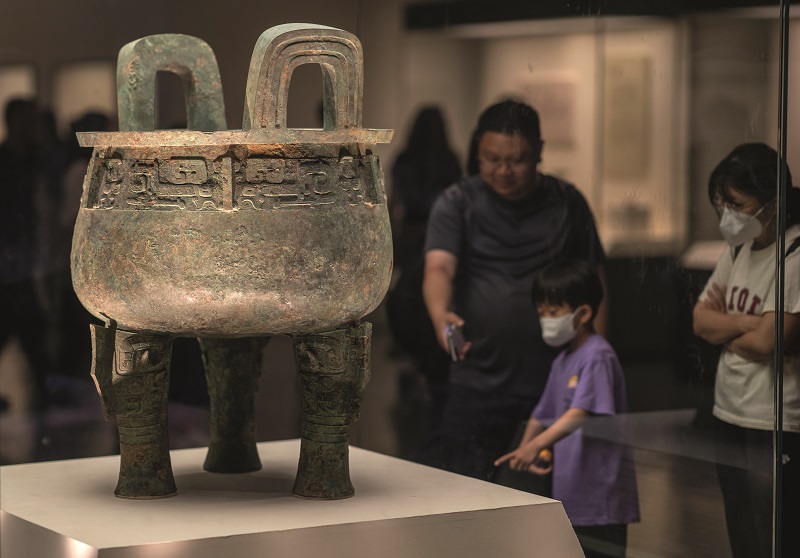
permanent exhibition “Ancient China” at the NMC. (Photo by Guo Shasha/China Pictorial)
The Chinese Nation: Harmony in Diversity
The NMC also holds the Bronze Water Container with Three Wheels of the Spring and Autumn Period (770-476 B.C.), the Gold Seal for King of Dian Kingdom of the Western Han Dynasty (202 B.C.-8 A.D.), the miniature stone stele by Master Zhenghui commemorating a pagoda dating to the Liao Dynasty (907-1125), engraved edicts from the Western Xia Dynasty (1038-1227), the book Hundred Family Surnames written in the Phags-pa script during the Yuan Dynasty, and the scroll painting Pacification of the Dzungars from the Qing Dynasty. Each artifact serves as a tangible reflection of the multifaceted development of the Chinese nation. They vividly demonstrate that China’s vast homeland, enduring history, resplendent culture and great national spirit are attributed to collective efforts of all ethnic groups in the country.
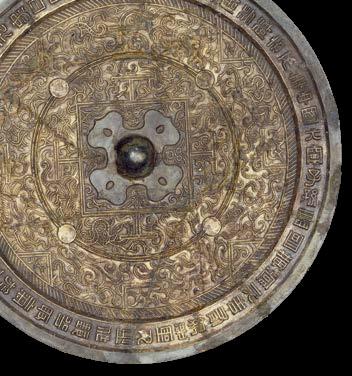
Inclusiveness of Chinese Civilization
From the tricolored glazed pottery camel with musicians from the Tang Dynasty, glassware made using Western techniques to a stone Buddha plinth inscribed by esteemed Chinese monk Xuanzang, each artifact evokes a profound appreciation of the prosperity and harmony along the Silk Road and the remarkable cultural inclusiveness of Chinese civilization. These treasures provide tangible evidence that the thriving development of Chinese culture owes much to exchange and mutual enrichment among civilizations. They also exemplify the Chinese nation’s belief in equality, mutual learning, dialogue, and inclusiveness within the realm of civilization.

the permanent exhibition “Ancient China” at the NMC. (Photo
by Qin Bin/China Pictorial )
Exhibiting Genes of Revolutions
Exhibits from modern times testify to major events such as burning opium at Humen Beach in Guangdong Province in 1839, the Jintian Uprising of 1851, the Boxer Rebellion of 1900, the relentless pursuit of revolutionary efforts since the Revolution of 1911, the resounding call by the revolutionary magazine New Youth (printed from 1915 to 1926), the birth of the CPC in 1921, the revolutionary spark ignited at Jinggangshan Mountains, and the unyielding spirit during the Chinese People’s War of Resistance against Japanese Aggression (1931-1945). Within the halls of the NMC is a vibrant portrayal of the history of China’s revolutionary culture.
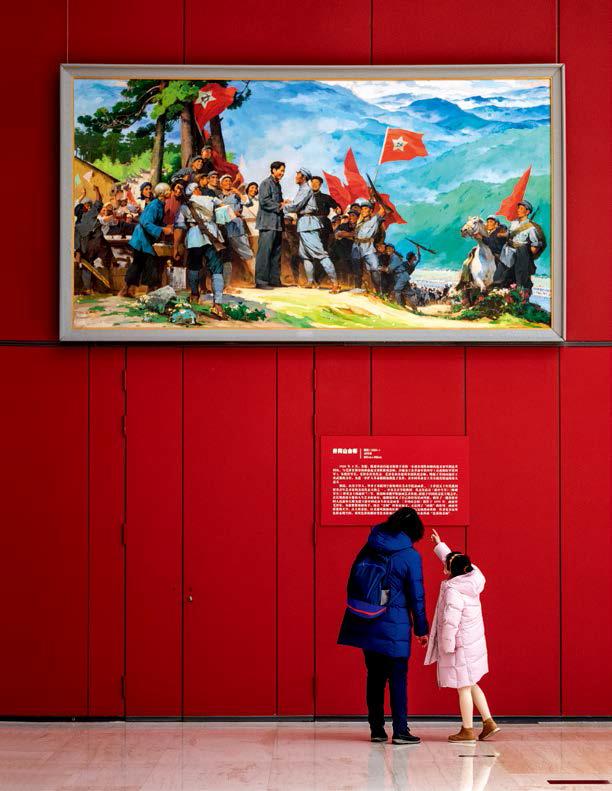
Works Collected in the National Museum of China,” February 12, 2021. (Photo by Xu Xun/China Pictorial )
Showcasing Socialist Culture and Chronicling the New Era of National Rejuvenation
From the resolute fervor of the Chinese people captured in the oil painting Founding Ceremony of the People’s Republic of China to establishing socialism as China’s basic system, from pursuit of a path of socialism with Chinese characteristics through reform and opening up to the tremendous transformation from growing prosperous to becoming strong, the NMC is chronicling the dynamic process of national rejuvenation under the guiding principles of socialist culture.
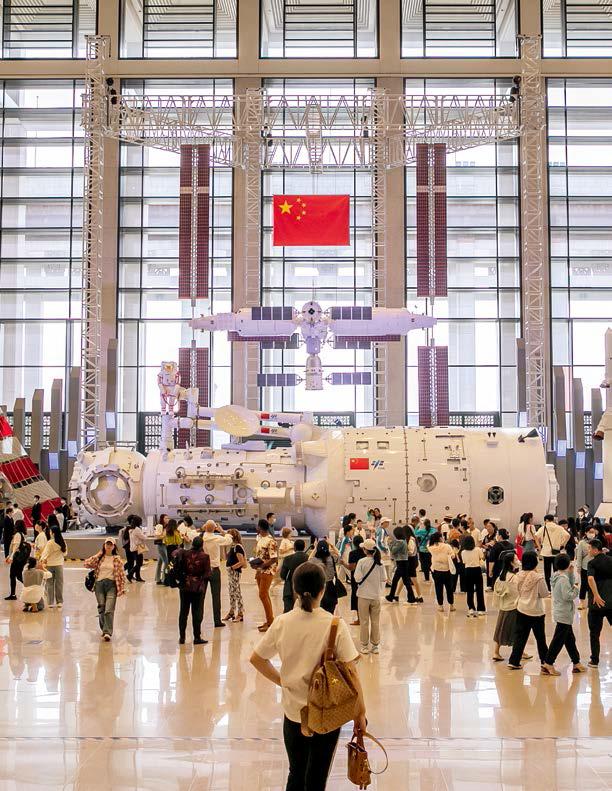
NMC in Beijing attracts many visitors, May 9,2023. (Photo by Dong Fang/China Pictorial )